Exploring the New Era of Indigenous Sites in the USA
All across the country, Native American tribes are taking part in the management of their ancestral lands and debunking myths about their history. Here are six sites where visitors can experience and understand indigenous cultures in new ways.
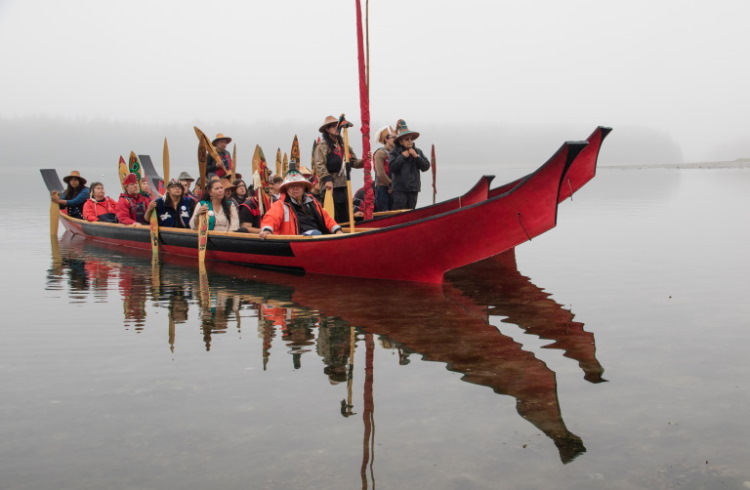 Photo © NPS
Photo © NPS
“To us, this is sacred ground.”
Alice Haldane and I are standing beside a broad gravel beach looking north into one of the world’s most famous fiords. Glacier Bay is not just sacred, it’s mythical, embodying a global image of Alaska’s snow-crowned peaks whose slopes spill rivers of ice to the sea. Like more than a million travelers who come here every year, I’m an outside visitor. But to Haldane this is her ancestral homeland, the territory of the Huna Tlingit people.
It’s also one of the world’s best-known national parks, “discovered” and first described by George Vancouver in 1795, popularized by famed naturalist John Muir in 1879 and as a result added to America’s parkland inventory in 1925. Its awesome scenery and active glaciers first drew travelers aboard cruise ships in the late 19th century, and even though the fiord’s glaciers have retreated 65 miles since 1795, it remains one of the most-sought cruise destinations on Earth.
Now, under 21st century federal policy, its 3.2 million acres are the province of both the National Park Service and its original inhabitants, the Huna.
That’s why Haldane is stationed today at GBNP’s visitor center complex to greet visitors who wander the beachfront path and discover the new Huna Tribal House, built as a joint NPS/Tlingit project in 2016. Visitors can see beautiful totems and wall panels, enjoy chant and dance performances, and learn the difference between the “scientific” version of the bay’s glacial history, and the Huna version.
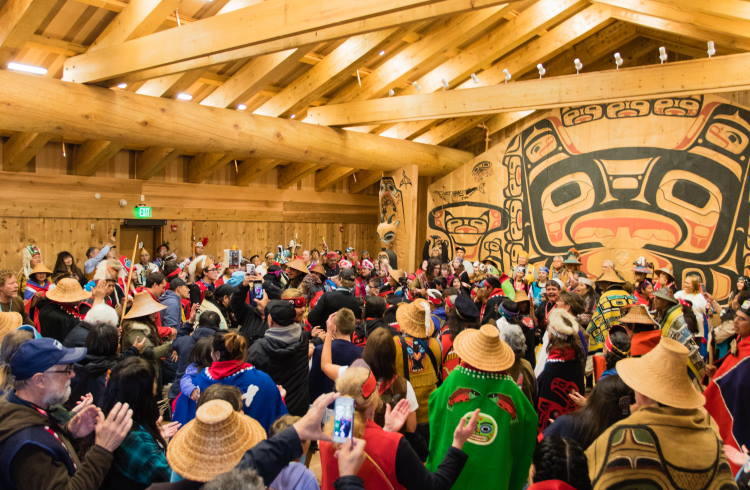
When Vancouver sailed by in 1795, there was no bay: tidewater glaciers had covered it entirely during the previous century as a result of the Little Ice Age (which brought cold-weather famine across much of Earth’s northern latitudes). The Tlingit version of what happened is a bit different.
“Well, one day a young girl – Kaasteen – got mad at the glacier and insulted it,” Haldane relates the Huna oral history tale. “Angry, the glacier advanced, and we had to leave.”
One must respect mother Nature, is the obvious point of the tale.
“But we always knew we would come back,” Haldane adds. They did so on Aug 25, 2016 – the park service centennial – when the new longhouse was dedicated with a ceremony that included the arrival of many Huna leaders in specially carved traditional cedar canoes.
- America’s indigenous renaissance
- Breaking stereotypes and bringing people together
- A new spirit of cooperation at Indigenous sites around the country
America’s indigenous renaissance
Marvelous as it is to witness the newfound spirit in which America’s indigenous peoples and its national government are collaborating at hundreds of parks and other preserves, one need not trek to famous landscapes to experience the Native American renaissance.
Across the country, the old Native theme – “Yes, we’re still here” – has become, in many places: “We’re on a roll.” Cash from hundreds of Indian casinos has been put to use funding scholarships, interpretive centers, art programs, wellness programs, and land conservation. A few years ago, when a development proposal was going to surround Snoqualmie Falls, east of Seattle, with suburbs, the Snoqualmie and Muckleshoot Tribes dipped into their capital reserves and bought the land and famous Salish Falls Lodge overlooking the falls, thus protecting a natural feature that’s been sacred to them for centuries.
Many futurists have declared the 21st century the “Indigenous Century,” and the breathtaking array of Native owned, managed, or co-managed attractions across North America is one of the most conspicuous facets of that potential. Some are major commercial businesses, such as the lodge. Some are just one-off enterprises where simple human encounters erase preconceived notions.
Breaking stereotypes and bringing people together
The Indian Pueblo Cultural Center’s Indian Pueblo Kitchen in Albuquerque, New Mexico is perhaps the best place in the United States to taste indigenous cuisine – and what cultural facet is more important than food in human society? But while some dishes are totally “authentic,” such as the restaurant’s signature Pueblo feast day stew and blue corn enchiladas, some reflect the colorful nature of modern indigenous life, such as the fried Kool-Aid pickles crusted in blue corn with salsa de arbol – about as all-embracing a dish as you are likely to find anywhere.
“One of our missions is to help people unlearn the worst Native stereotypes,” says IPCC chief operating officer Monique Fragua, a member of the Jemez Pueblo. “Food brings people together, and believe me, at our Pueblo, it’s not all corn and beans, however important they are.”
One could apply this idea to much of the indigenous renaissance.
A new spirit of cooperation at indigenous sites around the country
• At Grand Canyon National Park, federal officials recently granted a request by the canyon’s Native inhabitants to change the name of a popular resting spot on the Bright Angel Trail, from Indian Garden to Havasupai Gardens. The change is meant to make modest amends for the park service’s forced removal of the indigenous inhabitants from the canyon rim after the park was established in 1928 – and remind us that, long before the landscape became the “property” of the American people, it was the homeland of human beings who had lived, loved and thrived here since time immemorial.
• At Bears Ears National Monument in Utah, one of America’s newest preserves is being managed jointly by NPS and the Bears Ears Commission that includes five nearby tribes – the Ute, Zuni, Hopi and Navajo peoples to whom these peaks, plateaus and hidden canyons are sacred territory, holding thousands of ancient dwellings, petroglyphs, and artifacts. Exactly what shape co-management will take is still being determined – but the point is sharing the decisions among the government and the region’s indigenous inhabitants.
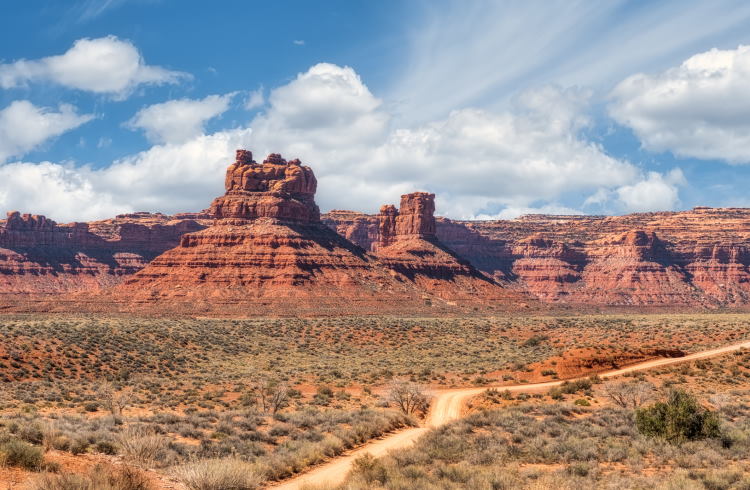
• At Hawai’i Volcanoes National Park, NPS officials regularly consult Native Hawaiian community leaders to determine how to manage and interpret the Big Island’s famous eruptions. While to Western geologists the outflows from Mauna Loa and Kilaue’a are lava, to Hawaiians they are the living manifestation of the goddess Pelehonuamea, commonly known as Pele. Mauna Loa’s recent eruption, first in almost four decades, was a sacred occasion for Hawaiian cultural practitioners, many of whom brought offerings of ti leaves, breadfruit, bananas and more for Pele’s new appearance.
As with many other issues, the park honors such offerings but restricts activity within the Kilauea caldera itself.
“It’s important to remember that many Native Hawaiians of the past, present and future have deep ties and lineal connection to the volcanic landscapes and natural and cultural resources protected by the park, long before Hawaiʻi Volcanoes National Park was established,” points out park superintendent Rhonda Loh. “Since Pele embodies elements that can be hazardous to humans, you could say she sets her own boundaries and the park enforces them.”
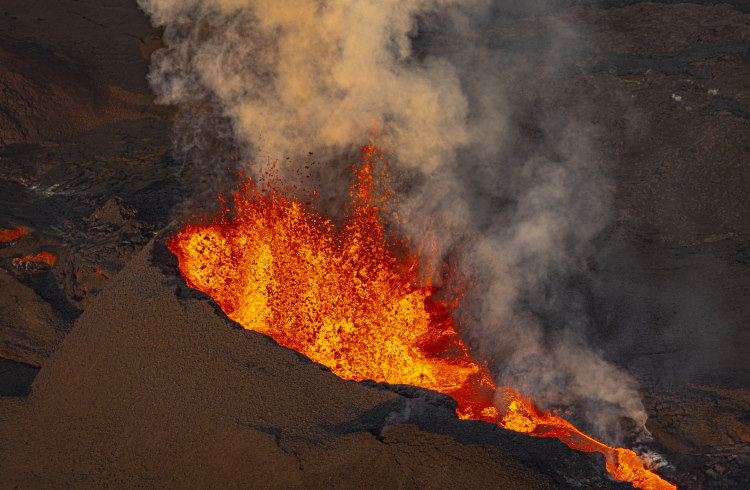
• At Mesa Verde National Park in southwest Colorado, visitors today learn another myth-busting story from the park’s Native Puebloan interpreters. A half-century ago, anthropologists and park officials told visitors that the inhabitants of the park’s awesome cliff dwellings had simply vanished six centuries ago. These mysterious people were called the “Anasazi.”
In reality, the descendants of what are now known as Ancestral Puebloans are today’s inhabitants of New Mexico’s 19 thriving Indian Pueblos, from Taos to Santa Clara – the tribes represented at Albuquerque’s IPCC. “Anasazi” is a pejorative epithet from the Navajo language that white ethnologists mistakenly adopted and have now discarded. And “Navajo” is a Puebloan word that somehow replaced “Diné,” the original term that, like most indigenous peoples’ names, simply means “the people.”
These distinctions are infinite and infinitely meaningful, and the federal co-stewardship policy endeavors to incorporate them into almost every property under federal management. While some places are just starting, destinations such as Glacier Bay have been pursuing this for years. GBNP, in fact, won a prize for its program in 2018.
Most of the visitors who sail into those famous waters benefit from co-stewardship without ever knowing it has a name, title, and proclamations behind it. Most ships that enter the bay now have Native interpreters onboard, a practice begun under the park’s formal pursuit of co-stewardship. As at every park and preserve, the sharing of cultures enhances understanding and enjoyment for all involved.
When I tell Alice Haldane that, on my cruise ship the day before, the adventurous among us had plunged into the frigid waters in a colorful ritual, she shivered and declared me crazy.
“But, you know, long-ago Tlingit warriors would steel themselves for battle in war canoes by standing in the ocean up to their necks for hours,” she says. “I guess you took a step on the warrior’s path.”
Not my goal. But an immersive experience is my goal when I travel, and the indigenous renaissance makes that far more possible today.
Related articles
Simple and flexible travel insurance
You can buy at home or while traveling, and claim online from anywhere in the world. With 150+ adventure activities covered and 24/7 emergency assistance.
Get a quote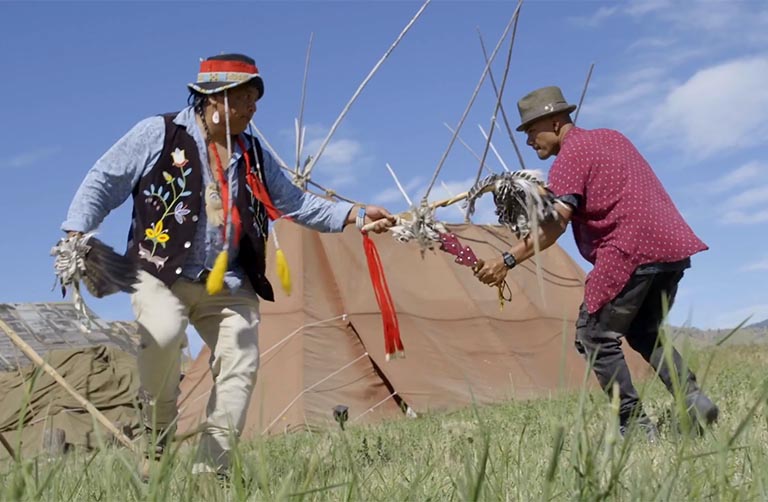
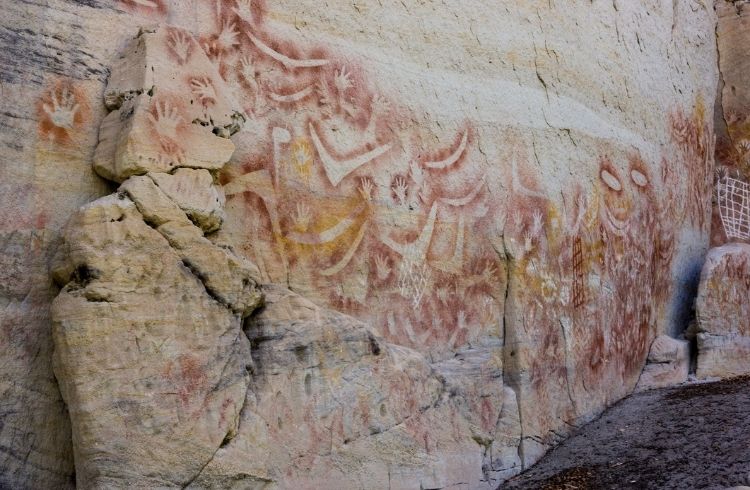
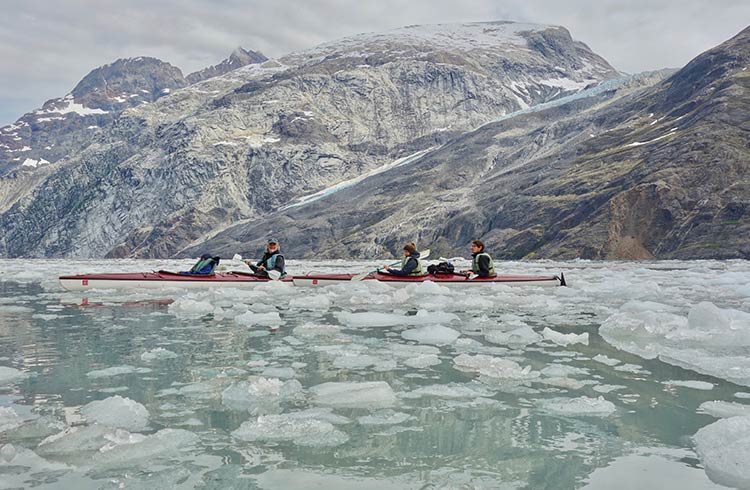
No Comments